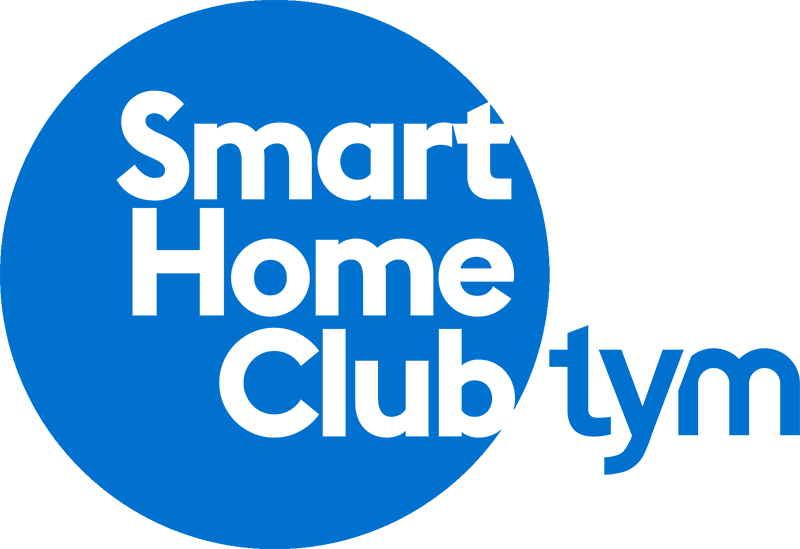How much does a Smart Home and Audio/Video system cost? Understandably, if you’re designing a new home — or remodeling an existing one — you want to know how much to budget for cool tech.
The challenge with throwing out a blanket price is that Smart Home and Audio/Video systems have Scale, and Variability in the design. But… I’m going to try my best to answer the question any way.
This will be the first in a series of posts diving into every facet of Smart Home and Audio/Video systems and their associated prices. Be sure to check back each week for the next post in the series.
Some fuzzy math for budgeting.
I want to discuss the Scale and Variable nature of Smart Homes in a minute, but first I want to give you a rough number to help you start estimating and budgeting right away. I’ve found over the years, that Smart Home and Audio/Video systems tend to run 1-5% of the total price of the home.
This isn’t perfect math, it’s simply a rule of thumb. I see systems that cost more than 5% of the home, and systems that cost less than 1% of the home. But, it’s safe to say nearly 90% of our client’s systems fall in this 1-5% range.
Here’s what you have to understand. If a client were to choose every possible piece of tech that could go into a home, it would cost substantially more than 5% of the finish price of the home. In reality, most clients only select a portion of the available tech. The final system as designed and selected usually falls in the 1-5% range.
Lets look at Scale and Variable and how it effects the price of your home.
Size matters.
Scale — Lets look at home audio. We’ll use Sonos audio for this example, and lets assume we want hardwired speakers that are recessed in the wall, or ceiling.
- Sonos amplifier will cost $495 — and it only powers one pair of speakers, or one room.
- A pair of good value line speakers is going to cost $75-100 per pair.
- Wire for the speakers will cost $60-100 for the pair depending on your market.
So the total cost for one room of Sonos audio is $650-700 before programming and labor. Ok, but how many rooms of Audio do you want. One? Two? Sixteen? Twenty-four? You may be thinking, you only want two rooms of speakers, but usually when we discuss with clients all the places they could put speakers ( like the master shower, the laundry room, or the rear deck) they suddenly want more speakers throughout the home.
So there’s an issue of scale with the system. The size and scope of the home, and your final system design have a dramatic impact on the home. What’s more, we found that Sonos is typically the most cost effective solution for new construction up to three rooms of audio. But, when you have four or more rooms of audio, there are usually cheaper alternatives for audio.
Now scale isn’t all bad, it actually gives us some leverage when we’re trying to design a system and stay on budget. One of the best features about today’s smart home tech is scalability.
Say for example while designing your system you find twenty locations where you want to put speakers, but the budget only allows for eight locations of audio. Awesome! Prewire all twenty locations, and only purchase the hardware for the eight zones. When the time is right, you can expand the system, scale up, and add in all 20 locations for speakers.
This ability to scale gives you a ton of flexibility in designing your system. It’s also why we recommend prewiring for EVERYTHING! Leave your options open later to expand if you ever want to. It’s also why so many of our client’s projects fall in the 1-5% group. They’re scaling their systems over time, and the starting point is usually in that 1-5% window.
No two smart homes are the same.
Variable — Ok, here’s where it gets a little crazy. Sticking with the home audio example. We’ve found that with home audio it’s cost effective to go with Sonos through three rooms of audio. Once we go to four or more zones, Control4’s Audio is more cost effective. Just remember the feature sets, and user experience between the two systems aren’t identical so you have to take that into consideration as well.
Sonos has practically every music streaming service available. Control4 on the other hand has Pandora, Tidal, and Deezer available out of the box. You can add additional services through 3rd party hardware, but that comes at an additional cost.
So which system will it be? Do you want the cost savings of Control4 for four or more rooms, or do you want the streaming music services and the added expense of Sonos? They’re both good options, it’s really not a right or wrong scenario. It’s simply a question of which option is best for you.
We also see this with lighting. You’re popular smart home platforms like Control4, and Savant have their own native lighting tech, but they also integrate with 3rd party lighting products like Lutron.
Control4’s light switches and dimmers have lots of functionality baked in. For example, an LED indicator on the Switch can be custom programmed to tell you the status of lights, or electronics elsewhere in the home. A single tap of the dimmer will dim the room’s lights, but a double tap may shut the lights off in another room of the house. Or if you want to have some fun, custom programming can make a double tap turn on the TV.
Again, you don’t have to use Control4’s dimmers, you could use dimmers from a 3rd party like Lutron’s Caséta lighting. Caséta will be nearly a third the cost of Control4’s dimmers, but it won’t have anywhere near the features or functionality.
To make it more interesting, you can mix and match. I know, fun right? We actually see this a lot. Clients will buy cheaper lighting tech like Lutron’s Caséta, but for key locations and applications will then buy a high-end dimmer or keypad from Control4 and integrate the different pieces together.
Home. Smart. Home.
Hopefully you’re starting to see why it’s difficult to just say to someone — without discussing the size and scope of the project — what the price of the Smart Home and Audio/Video will be. There’s just too much scale and variable to know without all the information.
Now, as you’re reading this post, Smart Home system design may sound complex and overwhelming. It’s really not, there’s just lots of options these days from more and more great manufacturers. That’s what we’re here for. We’ll help you navigate the options, and design a system that fits your needs and budget.
Be sure to check back next week for the next post in this series.

Named one of Technology Integrator’s Top Talent Under 40, Matt has designed systems for 20 national award-winning projects, including "Home Theater of the Year", and "Custom Smart Home of the Year" from CTA™ (Consumer Technology Association). His ebook “How To Wire Your Smart Home” is a best seller among professionals and DIY-ers alike. He has taken classes with Home Acoustics Alliance (HAA). You can watch Matt share the secrets of his craft on YouTube!
Matt is a Golden State fan.






